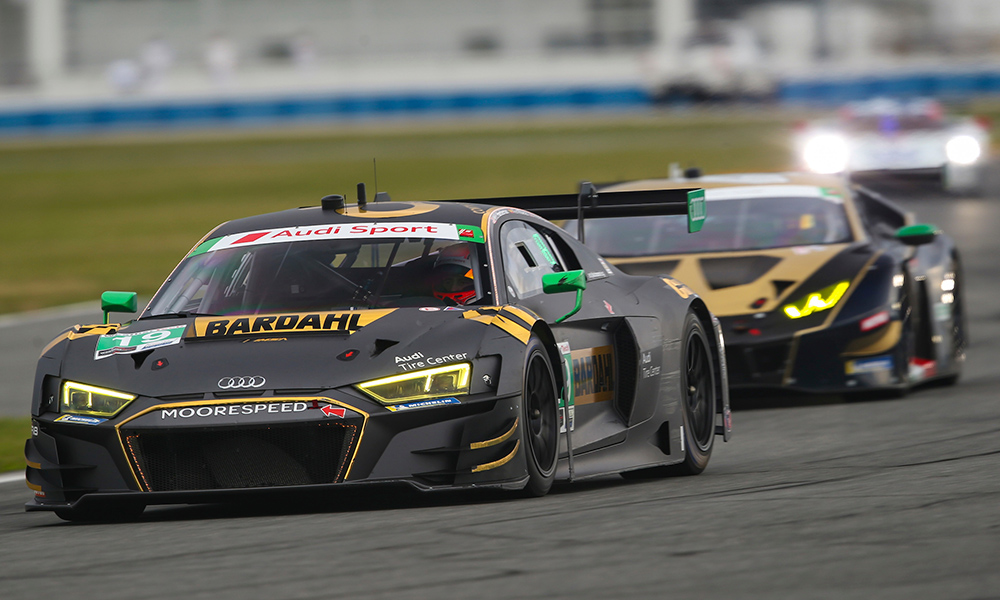
Photo: Jake Galstad/IMSA
IMSA could slow GT Daytona class machinery for the Rolex 24 at Daytona amid a shrinking performance gap between the GT3-spec cars and GT Le Mans class.
GTD machinery at last weekend’s Roar Before the Rolex 24 saw nearly a two-second improvement over times from the 2018 pre-season test, following the introduction of Michelin tires and either new or Evo-spec cars from Acura, Audi, Lamborghini and Porsche.
While GTLM cars maintained a slight top speed advantage at the official pre-season test, numerous drivers voiced concerns of overtaking GTD cars, which unlike GTE-spec machinery, are equipped with ABS and other driver aids.
According to Geoff Carter, IMSA’s senior director of technical regulations and compliance, the sanctioning body faces the difficult decision on whether to expand the performance window between the two production-based classes prior to the race.
“We’re going to take a look at it,” Carter told Sportscar365.
“We have physical limitations for performance windows on speeding up the GTLM [cars] as some of them can’t go any lighter [in weight] and some of them can’t take any more power.
“In GTD, the Mercedes is 1390 kg. It’s the heaviest car racing so it can’t take more weight. And they’re not fun to drive if you pull more power out of them.”
With GTLM at the upper limit of performance, Carter said the only option would be to slightly reduce the power of GTD cars, potentially for Daytona only.
The IMSA WeatherTech SportsCar Championship season-opener is set to utilize an event-specific BoP, which could add greater flexibility.
Carter, however, stressed that a decision has not yet been taken.
“The conversation with the manufacturers at Petit [last year] and in Daytona [in December] was do we slow down GTD?” he said.
“The difficult thing the [IMSA technical] committee had, and what the committee ultimately decided to do, was to slot in the three Evos and new Porsche [first].
“Half of the GTD field are new cars that we had no visibility to [until recently].
“Instead of slotting in half the field and doing a global reduction across the class, we thought about adding in those new cars first and see what that looks like. Then if there’s a global switch, do that.
“We still need to see where the cars are after [the weekend]. We have a lot to talk about.”
DPi/LMP2 Performance Gap Created
Carter said he’s pleased with the performance gap seen between the newly separated DPi and LMP2 classes, which has seen disparity in lap times and top speeds.
Changes to the LMP2 machinery, which include additional downforce, the mandatory use of the Le Mans-spec gear cluster and a 500-RPM reduction has resulted in a 2.5-second gap between the quickest DPi and LMP2 times from the three-day test.
More importantly, the quickest DPi car in the speed traps was more than 8 mph faster than the best LMP2 machine, which Carter said matched IMSA’s top speed delta simulation.
Stephen Simpson had the quickest trap speed overall in the No. 84 JDC-Miller Motorsports Cadillac DPi-V.R at 196.645 mph.
























